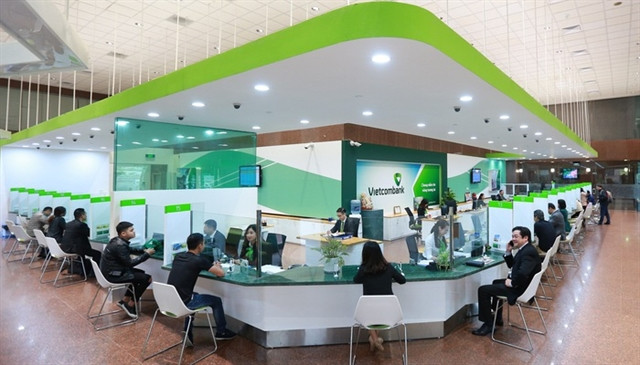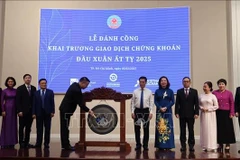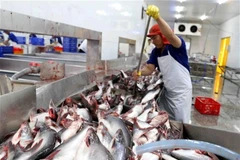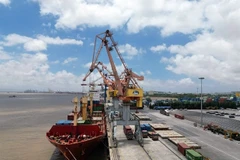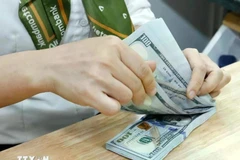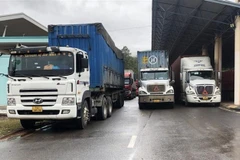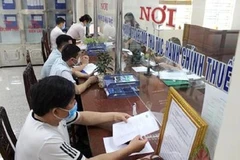Hanoi (VNS/VNA) - The financial capacity of Vietnam’scredit institutions has solidified in recent years, with their charter capitalreaching 578.9 trillion VND (24.85 billion USD) by the end of the first quarter2019.
In a report sent to the National Assembly recently, theState Bank of Vietnam (SBV) said the value rose by 0.45 percent against the endof 2018 and 13 percent against the end of 2017.
The institutions’ equity capital also increased by 4.2 percentand 20.1 percent against 2018 and 2017 to 792.6 trillion VND while their totalassets hit more than 11,000 trillion VND, up 0.8 percent compared withend-2018.
The SBV’s report also showed the institutions cleaned up 907.3trillion VND of non-performing loans (NPLs) from 2012 to the end of the firstquarter 2019, of which 163.14 trillion VND worth was settled in 2018alone.
The SBV noted the institutions settled 227.86 trillion VNDof NPLs from August 15, 2017 to March 2019.
With the results, the total NPL ratio of the institutions,including NPLs sold to the Vietnam Asset Management Company (VAMC), droppedsignificantly to 5.88 percent from 7.36 percent in late 2017 and 10.08 percentin late 2016.
However, the NPL ratio, exclusive NPLs sold to the VAMC, was2.02 percent by the end of March, compared with 1.89 percent in late 2018, 1.99percent in late 2017 and 2.46 percent in late 2016.
By the end of the first quarter this year, many banks, suchas Vietcombank, BIDV, Sacombank, LienVietPostBank and HDBank, also posted adecline in bad debt ratios compared to the beginning of the year.
Indeed, the institutions have intensified their bad debtsettlement by restricting the transfer of bad debts to the VAMC and handlingbad debts through debt sale, collateral assurance and risk provisions.
Vietcombank, for example, recovered 8.86 trillion VND ofbad debts by the end of March 2019, representing 71 percent of the totalprojected for 2016-2020.
Pham Manh Thang, deputy general director of Vietcombank,said Vietcombank had utilised its resources to recover bad debts. It requiredits branches with a bad debt ratio of 3 percent or more, or those with thetotal amount of 50 billion VND in bad debts or more, to establish a bad debtsettlement board.
As a result, Vietcombank’s total bad debt stood at more than6 trillion VND by the end of March, helping its bad debt ratio of totaloutstanding loans plunge to 1.03 percent. The bank aims to cut the rate tobelow 1 percent.
To deal with bad debts effectively, Thang said Vietcombankand other credit institutions needed to focus on mobilising resources intocontrolling credit quality and handling bad debts swiftly, helping unfreeze capitalflows and giving a boost to economic development.
Bui Van Hai, deputy head of the SBV’s Banking SupervisionDepartment, said restructuring and handling bad debts among creditinstitutions had so far achieved positive results while overall credit qualityhad improved.
The low-level ratio indicated that credit institutions hadexerted tight controls on newly arising bad debts and efficiently handledprevious bad debts.
Notably, the legal framework had improved, with somefundamental amendments made to mechanisms and policies to assist creditinstitutions in restructuring and handling of bad debts.
The SBV recently drafted a circular to replace the SBV’sCircular No. 19/2013/TT-NHNN prescribing the purchase, sale and settlementof the VAMC’s bad debts. Accordingly, those still reporting outstanding specialbonds of the VAMC would not be allowed to pay dividends in cash.
Domestic banks have acknowledged that they are currently inthe process of restructuring and settling bad debts. Therefore, profits are mainlyused for their provisions while some decline to make dividend payments toshareholders.-VNS/VNA
